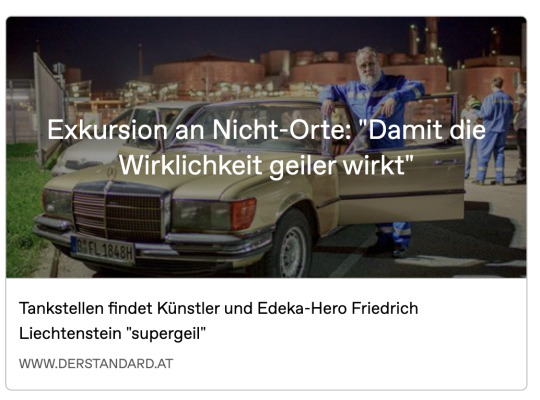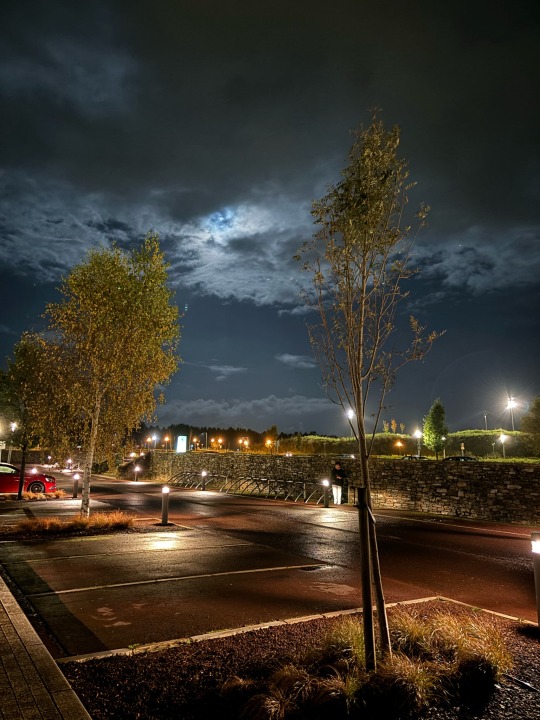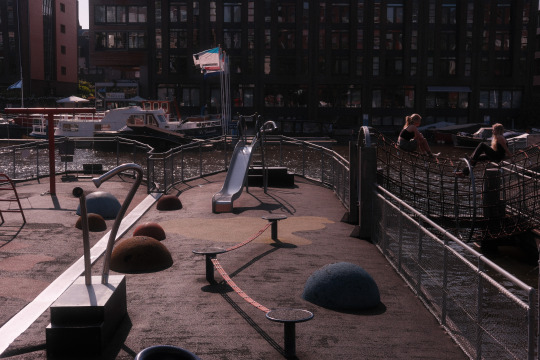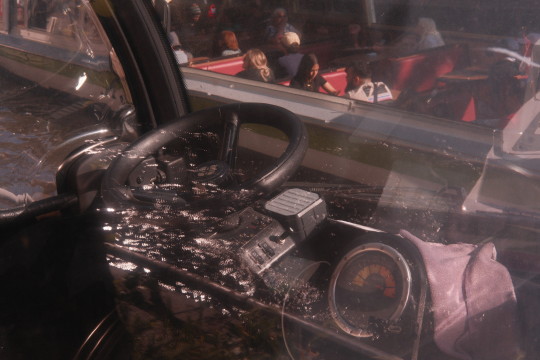#nonplaces
Explore tagged Tumblr posts
Text
The state intervenes in children’s use of the city, criminalising children’s uses of the streets [...]. Much of this age-segregation emerged in the so-called Progressive Era (1890-1918) in northern cities of the United States, particularly Chicago. Informed by turn-of-the-century science [...], [t]hese child-savers sought to transform delinquent urban children into upright citizens. In doing so, reformers changed the shape of America’s cities. [...] Only a handful of dedicated playgrounds existed in urban America in the 1890s. [...] Contrasting images of working-class, immigrant youth left unsupervised on the streets with children of their own class, who led increasingly sheltered lives, middle-class urbanites feared for the future of the country. The burgeoning reform class, led by Chicagoans such as Jane Addams, feared so-called “swarms” of children on the streets [...].
---
A new theory of child-development known as recapitulation theory had recently emerged. Proponents of this theory, such as G. Stanley Hall, argued that children passed through (or recapitulated) all the stages of the evolution of the race before they achieved adulthood. [...] Advocates [...] idealised almost all of white boys’ misbehaviour as recapitulation of the race’s past [...]. Although recapitulation theory had room for the sons of European immigrants, [...] children of colour remained outside the narrative of idealised misbehaviour. [...] [W]hite Americans [...] sought to repress the misbehaviour or so-called childhood savagery of children of colour rather than encourage it. Thus, just as white children were encouraged to embrace their inner savage and hold mock powwows and “to play Indian”, Progressive reformers confined Native American children to “civilizing” boarding schools [...].
Growing concerns over masculinity at the turn of the twentieth century limited reforms that could be seen as “molly-coddling”. To completely crush the misbehaving instinct, many middle-class Americans believed, would be just as dangerous [...]. Drawing on recapitulation theory, reformers believed the key to anti-delinquency among [...] European [...] children was providing these children with supervised, orderly places where the misbehaving instinct could safely play out. Central to reformers’ attempts to save but not tame [...] children meant the development of the world’s first municipal playground system in Chicago [...]. By 1915, the city of Chicago ran sixty-six recreation centres [...]. President Teddy Roosevelt heralded it as “one of the most notable civic achievements of any American city.” From Chicago, the idea spread around the country. By 1921, almost 200 cities employed a total of over eleven thousand men and women as year-round playground workers. [...]
---
But the state, too, struggled to control urban childhood. [..] [T]ruant officers [...] struggled with huge caseloads in the early twentieth century. [...] On the streets, escapees evaded police, probation and truant officers [...]. A study of reform schools in and near Chicago in the early twentieth century found two-fifths of detainees left in what was euphemistically called ‘informal departure’ [...]. Escape caused such an issue for reformatories that it was considered among the most serious offences and, as such, carried the heaviest punishments including beatings, being hung by the wrists, being shackled, wearing heavy iron studded shoes, being placed in a tub of ice water, and being caged.
Even as Progressive ideals ostensibly moved prisons and other reform institutions further from the punishment of the body to the treatment of the individual’s soul, in practice, reformatory officials often resorted to physical punishments for the treatment of runaways. [...] [T]he new juvenile institutions of the early twentieth-century differed so wildly in practice from their conception in theory. [...]
---
By the 1930s, however, the concept of the dangerous but ultimately salvageable swarm which had shaped Progressive Era responses to the problems of children and the city was gradually replaced by the far more pessimistic idea of individual deviant personalities. Faith in the ability to transform children through transforming the city collapsed. [...] Juvenile Courts also faced increasing pessimism. In 1936, leading child-saver Grace Abbott asked rhetorically whether the Juvenile Court of Chicago had proved a success or a failure and concluded pessimistically [...].
Delinquency experts increasingly turned to psychiatry to explain and treat criminal behaviour; the psychiatrist supplanted the playground as the key to anti-delinquency.
---
As reformers advocated individualised treatment of delinquent personalities, on the streets, changing priorities of policing increasingly and aggressively targeted children of colour. In addition, suburbanisation was changing the demographics of the inner city. Increasingly, white families were choosing to move out to the suburbs [...]. As inner-city youth became more and more synonymous with minority youth, the urban child seemed increasingly outside the realm of “saving” and middle-class white Americans responded to black youth’s corner culture with intense policing and urban flight, not playgrounds and child-saving. The pessimistic view [...] laid the foundation for the increasingly racialised and violent attempts to control poor urban children in the later twentieth century. [...]
---
Most importantly, Progressive reformers criminalised and delegitimised much of children’s traditional use of the streets, ensuring that age became a crucial component of urban discipline. [...] When encounters with real children transformed institutions and regulations in unexpected ways, the result was increasingly coercive methods and policing.
---
All text above by: Oenone Kubie. “Child’s Play: How Progressive Era Science Shaped America’s Playgrounds.” Oxford Urbanists. 15 September 2019. [Bold emphasis and some paragraph breaks/contractions added by me.]
#abolition#ecology#colonial#imperial#carceral geographic#geographic imaginaries#ecologies#multispecies#debt and debt colonies#black methodologies#indigenous#victorian and edwardian popular culture#nonplaces#katherine mckittrick#kathryn yusoff#progressive era chicago#ongoing chicago discussion
313 notes
·
View notes
Text

Rolleiflex 6x6, A Coruña. No lugares by @andres-irrazabal
#non places#coruña#blackandwhite#filmphotography#6x6#rolleiflex#filmisnotdead#mediumformat#nonplaces#nolugares#analogicphotography#analogphotography#analog photography#ilfordfilm#ilfordhp5#liminal photography#liminal#andres irrazabal#andres-irrazabal#irrazabal_studio
1 note
·
View note
Photo

https://www.derstandard.at/story/2000036852096/exkursion-an-nicht-orte-damit-die-wirklichkeit-geiler-wirkt
0 notes
Text

#collage#collageart#collageartistsontumblr#artists on tumblr#collagecommunity#elapagon#analog collage#collageartwork#analoguecollage#house#gold foil#russianavantgarde#el lissitzky#nonplace#insideout#luzoscuridad#arbol#cutandpastecollage
11 notes
·
View notes
Text

Cartes postales de Saint-Non-lieu, 11
Non-lieu ("non-place" or "nonplace" in English) is a concept, introduced by French anthropologist Marc Augé. It describes transient spaces where people maintain anonymity and which lack the cultural or historical significance to be considered true "places" in anthropological terms. Augé contrasts this concept with "anthropological places," which are spaces that reinforce identity and facilitate meaningful social interactions among individuals with shared cultural references. Non-places, however, do not serve as meeting points or foster a sense of community. In essence, a non-place is an area we pass through rather than inhabit, where individuals remain detached, unnamed, and lonely.
#postcards#vintage postcards#old postcards#non-lieu#non-place#nonplace#AI#generative art#ai art#Midjourney#neurophotography#promptography#collective memories#vintage style#retro style#neuroart#generative Kunst#KI-Kunst#kollektive Erinnerungen#Vintage-Stil#arte generativo#arte de IA#生成的#生成艺术#人工智能艺术#集体
9 notes
·
View notes
Text

In the quiet haze.
Taken December 27, 2022. 02:03 A.M.
- M.
#iphone camera#amatuer photography#photography#endless sky#dusty trinkets#night sky#nighttime#rainy night#hazy night#haze#rain#late night photos#nonplace
3 notes
·
View notes
Text

where tf am i
6 notes
·
View notes
Text

The Embassadors feat Michel Ongaru - Healing The Music (Nonplace, 2008)
#the embassadors#michel ongaru#burnt friedman#nils wogram#nonplace#electronic#jazz#global#germany#berlin#2008#2005-2009#Bandcamp
2 notes
·
View notes
Text
In the ruins, ‘master narratives of history as progress decompose into the tense confabulations of a continuously remembered past that hits the present like a nervous shock’ [...]. The ghosts of this past rear up in the ruin, they are the debris of unprecedented material destruction [...] ‘the “trash” of history’ [...]. Forgetting this carnage [would be to support] the myth of [...] progress [...]. But the ruins remember [...], revealing the fragility of the social order. [...] Hauntings rupture linear temporality, inconveniently bring forth energies, which have supposedly been extinguished and forgotten. [...] Cities [and places, generally] seem to becoming increasingly regulated. In the transformation towards a service economy during the 1980s [in Britain], [...] [o]ld industrial sites were turned into shopping centres, retails parks and leisure sites. [...] There is then, in the drive to market places, [...] an aesthetic imperative to smooth over the cracks [...], and to fix the past, so that it does not intrude into an imagined linear future. [...] In cahoots with [...] marketeers, they suggest that the past is a distant, romantic echo that resounds faintly in museums [...]. Yet the ruins shout back at the refurbished urban text. [...] [T]hey haunt the city, for the unofficial past cannot be exorcised [...]. Ruins are sites where we can construct alternative stories to decentre commodified, official [...] descriptions, and [...] keep the past opened [...]. Counter-memories can be articulated in ruins, narratives that talk back to the smoothing over of difference. Away from the commercial and bureaucratic spaces of the city, ghosts proliferate where order diminishes. Ruins are [...] especially important, because [...] it is ‘essential to see the things and the people who are primarily unseen and banished to the periphery of our social graciousness.’
Text above by: Tim Edensor. “Haunting in the ruins: matter and immateriality.” Space and Culture Issue 11, pages 42-50. January 2002. [Bold emphasis added by me.]
-
-
-
[T]he contemporary Western city [...] [is] the site of [...] regulatory regimes concerned with strategies of surveillance and aesthetic monitoring [...]. The modern city can never become a wholly Appollonian, seamlessly regulated realm for it continues to be haunted by the neglected, the disposed of, and the repressed [...]. Within the interstices of the city there are a host of other spaces, part of a “wild zone”, a “[…] site […] which avoids the objective processes of ordered territorialisation […]”.
Staged […] through the intensified mediatisation and commodification of popular sites, myths, and icons […], mediated imaginary geographies circulate through adverts, soap operas, ‘classic’ rock stations [...] typically drenched in […] ideologies. […] These exhibitions memorialise culture via ‘publicly sanctioned narratives’ and institutionalised rhetoric [...]. [I]n which people are encoded and contextualied, categorised and narrated.
Accordingly, ruins are places from which other memories can be articulated [...]. [T]he outmoded object can become charged [...] with a certain power, and "might spark a brief profane illumination of a past productive mode, social formation, and structure of feeling - an uncanny return of a historically repressed moment" [...]. Thus we might stumble across seemingly archaic decor or furniture, [...] toys, and mascots of yesteryear [...], the debris of discarded fashions [...]. Although such objects [may] seem [...] absurd or comical, they may bring back knowledge, tastes, and sensations [...]. This was debris which was enfolded into the mundaneity of a shared everyday [...].
Along with other places on the margins of regulated space, industrial ruins are “points of transition, passages [...], moments of magic that exist at the interstices of modernity” […]. Modern attempts to cleanse, banish ambiguity, and order the memory of space are always disturbed by such disorderly spaces and by the ghosts they contain, who refuse to rest quietly, [...] a “spectral [...] residue“ which haunts dominant ways of seeing and being [...].
In contradistinction to the fixed memories [...] and to the imaginary linearities proposed by hegemonic […] memories, these ghosts foreground ambiguity, polysemy, and multiplicity, enabling us to “disrupt the signifying chains of legitimacy [...].” Although it is often overcoded and regulated, the city nevertheless contains multitudinous scraps from which alternative stories might be assembled. […] In spaces such as industrial ruins, the excessive debris confronted constitutes material for multiple modes of narration about the past: “the debris of shipwrecked histories still today raise up the ruins of an unknown, strange city. They burst forth within the modernist, massive, homogenous city like slips of the tongue from an unknown, perhaps unconscious, language” [...].
This kind of remembering implies an ethics about confronting and understanding otherness (here, the alterity of the past) which is tactile, imaginative […].
---
Text by: Tim Edensor. “The ghosts of industrial ruins: ordering and disordering memory in excessive space.” Environment and Planning D: Society and Space Volume 23, pages 829-849. 2005. [Bold emphasis and some paragraph breaks/contractions added by me.]
#halloween#i guess idk#abolition#ecology#haunted#imperial#colonial#indigenous#multispecies#landscape#temporality#geographic imaginaries#nonplaces and auge and certeau
97 notes
·
View notes
Text



1 note
·
View note
Text

Atopar beleza nun parking grazas á luz irisada da Lúa.
0 notes
Photo










1 note
·
View note
Text

Cartes postales de Saint-Non-lieu, 14
Non-lieu ("non-place" or "nonplace" in English) is a concept, introduced by French anthropologist Marc Augé. It describes transient spaces where people maintain anonymity and which lack the cultural or historical significance to be considered true "places" in anthropological terms. Augé contrasts this concept with "anthropological places," which are spaces that reinforce identity and facilitate meaningful social interactions among individuals with shared cultural references. Non-places, however, do not serve as meeting points or foster a sense of community. In essence, a non-place is an area we pass through rather than inhabit, where individuals remain detached, unnamed, and lonely.
#postcards#vintage postcards#old postcards#non-lieu#non-place#nonplace#AI#generative art#ai art#Midjourney#neurophotography#promptography#collective memories#vintage style#retro style#neuroart#generative Kunst#KI-Kunst#kollektive Erinnerungen#Vintage-Stil#arte generativo#arte de IA#生成的#生成艺术#人工智能艺术#集体
9 notes
·
View notes
Text
“The history of modern democracy is, at bottom, a history with two faces, and even two bodies—the solar body, on the one hand, and the nocturnal body, on the other. The major emblems of this nocturnal body are the colonial empire and the pro-slavery state-and more precisely the plantation and the penal colony... The colonial world, as an offspring of democracy, was not the antithesis of the democratic order. It has always been its double or, again, its nocturnal face.... As Frantz Fanon indicated, this nocturnal face in effect hides a primordial and founding void—the law that originates in nonlaw and that is instituted as law outside the law. Added to this founding void is a second void—this time one of preservation. These two voids are closely imbricated in one another. Paradoxically, the metropolitan democratic order needs this twofold void, first, to give credence to the existence of an irreducible contrast between it and its apparent opposite; second, to nourish its mythological resources and better hide its underneath on the inside as well as on the outside. In other terms, the cost of the mythological logics required for modern democracies to function and survive is the exteriorization of their originary violence to third places, to nonplaces, of which the plantation, the colony, or, today, the camp and the prison, are emblematic figures.”
– Achille Mbembe, Necropolitics
331 notes
·
View notes
Text
speaking of deserts, im sad this article isn't available to read publicly because it whips ass, but i can do what i always do. quote heavily
From 'Without Form and Void: The American Desert as Trope and Terrain' by John Beck:
The Hebrew word tohu is usually translated in two ways. It can denote an arid wilderness, a desert, and it can refer to chaos. In this latter sense it is usually paired with bohu, which signifies emptiness, desolation, formlessness, confusion. Tohu-bohu, desert and desolation, chaos and confusion, or “without form and void,” as it is translated in Genesis. Chaos itself denotes a vast chasm, an abyss; in other words, it is a gap. Yet can a gap be without form, since it exists as the opening between things, as the interval that separates? [...] the abyssal chaos, which is also an arid wilderness, is far from being the vacuum of worthlessness it is often read as being. It is, instead, the ground of potentiality, the necessary generative stuff of creation. The void, then[...] is a place rather than a nonplace, and, as the place where God performs His differentiating acts—dividing earth from sky, sea from land, day from night—it is the location of differentiation itself, the place of infinite multiplicity. An actual desert place is thus burdened with a double conceptual significance: it is read at the same time as evidence of an absolute void and as the place for boundless free play, and deserts invariably elicit responses of both terror and ecstasy, of disgust and liberation. The idea of a desert, then, at least in cultures that draw upon Hebrew and Christian traditions, involves a cluster of notions including vacancy, expansiveness, and fearful potentiality. Not surprisingly, actual deserts carry the burden of this metaphorical overlay, a burden that manifests itself not just in the artistic responses to the physical space but in the institutional practices that govern its economic and political uses. The impact of this metaphorical construction of landscape is nowhere more pronounced than in the deserts of the southwestern United States.
[...] From the overarching conception of the desert as vacancy, at least five main rhetorical tropes emerge[...] first, that acceptance of the desert’s emptiness, and thus its uselessness, allows the space to become the venue for unhindered experimentation, a testing ground both physical and spiritual. Second, the desert is a metaphor of apocalypse, evidence of the ultimate wasteland. Third, the desert is often apprehended as the limit to reason, its vastness and tendency to alter habits of perception making it a physical challenge to expected modes of comprehension. Following from this, the desert can become either a venue for an escape from modernity, an elemental alternative to the rational order of “civilized” life, or, conversely, representative of the chaos of an unordered primal “nature” that must be resisted and expunged. Finally, as the American desert lies within the economically emergent post–World War II “New West,” the desert can increasingly be seen as representative of aspects of contemporary capitalism: a space without boundaries, unhindered and unregulated by old practices and habits[...]
[...] What is striking is how these rhetorical constructions accommodate both negative and positive readings at the same time. The desert is glorious and horrible, a refuge and a danger, horizonless and thus a threat to sanity, and so on. These paradoxes not only appear irresolvable, they tend also to be intrinsic to the ways in which the terrain is put to use, both figuratively and literally. This is a space of everything and nothing, a space of visual intoxication and invisible toxicity. In this ostensibly most exposed of environments, exposure functions, perversely and disturbingly, as a form of concealment.
---
[...] For a nation concerned with agricultural expansion as the primary civilizing force, hitting arid lands meant that “the project of mastering the continent seemed to have reached a non-negotiable limit. By all the conventional standards of value and habitability, the desert was an irrational environment, a betrayal of abundance fulfilled everywhere in North America."[...]
[...]The American desert, like its biblical counterparts, could be a site for testing, for challenging and overcoming the temptations of civilized life. While the desert became, after the mid-nineteenth century, a site of economic value due to the discovery of minerals, by the turn of the century monetary gain was not the only attractive force drawing people toward a reconciliation with the desert West. Growing dissatisfaction with American capitalist culture among the well-off, educated middle classes made the deserts inviting as a purgative space of romantic sublimity and aesthetic purity. Even as the evangelism of Progressive irrigationists began to display an increased confidence in the possibility of redemption for the terrain through cultivation, as if technology could finally fill the gap and convert the land to the righteousness of agriculture, aesthetes like Rutgers art historian John C. Van Dyke were writing about the visual splendor of a land that should remain untouched by base economic interests.
The conflict between contesting impulses toward either exploitation or conservation of the land is, then, present from the beginning of U.S. interest in its desert dominion, yet both positions derive at least part of their authority from the imposition of ideas of vacancy onto the terrain. Both read the space as empty and see this emptiness as its source of value, whether it be to extract from, build upon, or contemplate as evidence of some cosmic truth. Yet this notional vacancy, saturated as it is in the Hebrew and Christian traditions of desert iconography, functions also as a form of selective blindness that eliminates consideration of native inhabitants, indigenous traditions, and other, alternative spiritual and utilitarian values that may have prior claim to the land. Speculators and aesthetes alike need the tropes of emptiness and uselessness in order to validate their construction of the landscape as available space. Do the Pueblo Indians, for example, see the terrain they have inhabited for thousands of years as a gap, a vacancy, a howling wilderness?[...]
---
[...]Given the persistence of desert readings that seem to find apocalypse in the terrain even before the military managed to enact one, is it possible that the landscape somehow invites thoughts of destruction? For a topography that reveals to the human gaze the elemental resistance of the nonhuman to recuperation must then suffer the vengeance of a frustrated conqueror. Is the pursuit of desert destruction an implosion of anxiety in the face of the inscrutable landscape? Faced with a space that refuses settlement and that, in its taciturnity, overturns the logic of expansion and ownership, reason folds in on itself and results in the mentality summed up by the now infamous comment of the general during the Vietnam War that “we had to destroy the city in order to save it.”[...] Could the desert, as a particular topographical site, stand for the terminal point in an entire history of U.S. pursuit of a tabula rasa? Such a history would include, but would not by any means be exhausted by, policies of deforestation, the extermination of Indians and of buffalo, the gridding of the territories, and the marking-off of national parks as managed wilderness. Manifest destiny is here rewritten to mean an unlimited attack on the desert as Other, which culminates in the desert as all-encompassing, the obliterated, uninterrupted space of absolute power.
[...]This is precisely what Leslie Marmon Silko’s Tayo, traumatized by battle and captivity in the Pacific, perceives in a moment of clarity as he cries with relief “at finally seeing the pattern” that connects the alienating deterioration of his southwestern Laguna Pueblo community and military operations overseas:
He had been so close to it, caught up in it for so long that its simplicity struck him deep inside his chest: Trinity Site, where they exploded the first atomic bomb, was only three hundred miles to the southeast, at White Sands. And the top-secret laboratories where the bomb had been created were deep in the Jemez Mountains, on land the Government took from Cochiti Pueblo: Los Alamos, only a hundred miles northeast of him now... There was no end to it; it knew no boundaries; and he had arrived at the point of convergence where the fate of all living things, and even the earth, had been laid.
The apocalyptic power of America’s nuclear weapons has not only been achieved by yet another assault on Indian sovereignty, cordoning off and irradiating great swathes of terrain; this power has, in an inversion of crushing irony, brought everything together in one final communion. After Los Alamos, “human beings were one clan again, united by the fate the destroyers planned for all of them, for all living things; united by a circle of death that devoured people in cities twelve thousand miles away, victims who had never known these mesas, who had never seen the delicate colors of the rocks which boiled up their slaughter.”
#hi. this was in my drafts. and now it is not#i get down on all fours and i start biting#love this desert#long post. very long post#content warning: war#content warning: colonization#content warning: atomic weapons testing
5 notes
·
View notes
Text
German Trip Hop Playlist (YouTube)
Alright, folks, for the past couple Sundays I've been posting playlists comprised of German music from electronic genres that the country tends to be naturally associated with—trance and techno—but this week, to end this little Deutsch-centric foray I've been on, we're getting into some sweet cuts from a genre that Germany's not so typically known for: trip hop.
Now, maybe when you think of German music, you naturally assume some things. And probably because of Kraftwerk and krautrock and techno, you imagine stuff that sounds cold, mechanical, repetitious, and robotic. But this little playlist here, which really isn't even beginning to scratch the surface of Germany's trip hop landscape, should start to disabuse you of your very own wrongly held preconceived notions. All of these tracks here are a blend of smooth, blissful, and relaxing. Clearly and obviously, there’s far, far, far more to German music than sounding like an automaton, but maybe you never really thought about it all that much 🤷♂️.
So let's highlight some of these nuggets here, and start with a track that really seems to call back to trip hop's own Bristol, UK origins, when it was basically fusing Jamaican dub and hip hop in order to form sonic syrup in the late 80s and early 90s. The Frankfurt-based duo of Soul Patrol, who only ever released a pair of 12-inches, bring forth "Slow Groove," a sedative that served as their debut track when it appeared on a pair of compilations back in '95. This gem uses a sample that should sound *very* familiar to hip hop heads: Isaac Hayes' "Walk On By," a part of which was famously used in The Notorious B.I.G.'s "Warning," as well as another mid-90s trip hop tune, Belgian group Hooverphonic's "2 Wicky," which got a lot of burn on Pandora back when Pandora was still a big fucking deal. "Slow Groove" basically sounds like it was made by Portishead, but replacing Beth Gibbons on vocals is an American woman named Francesca Harper, who is actually now a world-renowned dancer. And it has a little over 43,000 plays across a few different uploads on YouTube.
Next up, from Berlin, we have a guy named Jiri.Ceiver, who in 1997 released a song called "Ycool" on a 10-inch single as well as his second and final album, Jig, Amble & Lisp, which were both put out on the legendary Frankfurt-based and Sven Väth co-owned Harthouse label. Harthouse had originally started out as a pioneering outlet for hard trance, trance, and techno in the early 90s, but by the latter part of that decade, and before they wound up closing their doors, they had expanded their palette with a bunch more electronic genres. And “Ycool,” a terrific piece of reconstructed trip hop-blues, serves as a sweet example of just how broad that expansion was getting. And it only has 169 plays!
And lastly, we have something beautifully dubby from another Berliner named Christian Kleine, whose 2000 tune, "Bitter Things," first exclusively appeared on a lovely double-disc compilation called Putting the Morr Back in Morrissey, which really had nothing to do with The Smiths' own frontman, other than the fact that a bunch of its songs had a reflective melancholy to them. However, despite "Bitter Things"' own title, this is a song that was really made to sync up with a sunrise. An organic, crunchy, and happy, boom-bappy bop, with cool, dubby effects employed all throughout. Over 36,000 plays across a few different YouTube uploads.
This playlist is ordered as chronologically as possible:
Nonplace Urban Field - "Universe" Jazz Con Bazz - "Wayz of Life" Knowtoryus - "The Revenge of the Bomberclad Joint (Kruder & Dorfmeister session, Part II)" Fon:Kin - "Montininja (Fauna Flash remix)" Hacienda - "Nightmare of Max" Soul Patrol - "Slow Groove (Soul Patrol original vocal)" Beanfield - "Charles (remix)" Jiri.Ceiver - "Ycool" Christian Kleine - "Bitter Things" Lali Puna - "Fast Forward (Flowchart Rmx)"
And this playlist is also on YouTube Music.
So with this start, we have ten personal German trip hop favorites of mine that appear on a handful of compilations that I've collected over the years. Totals at 53 minutes.
And next week we'll be staying in this chilly mode, but we'll be zooming out from Germany ⛄.
Enjoy!
More to come, eventually. Stay tuned!
Like what you hear? Follow me on Spotify and YouTube for more cool playlists and uploads!
#trip hop#downtempo#chillout#chillout music#chill out#chill out music#electronic#electronic music#music#90s#90s music#90's#90's music#2000s#2000s music#2000's#2000's music#00s#00s music#00's#00's music#youtube#youtube playlist#playlist#playlists#youtube playlists#youtube music#youtube music playlist#youtube music playlists
6 notes
·
View notes